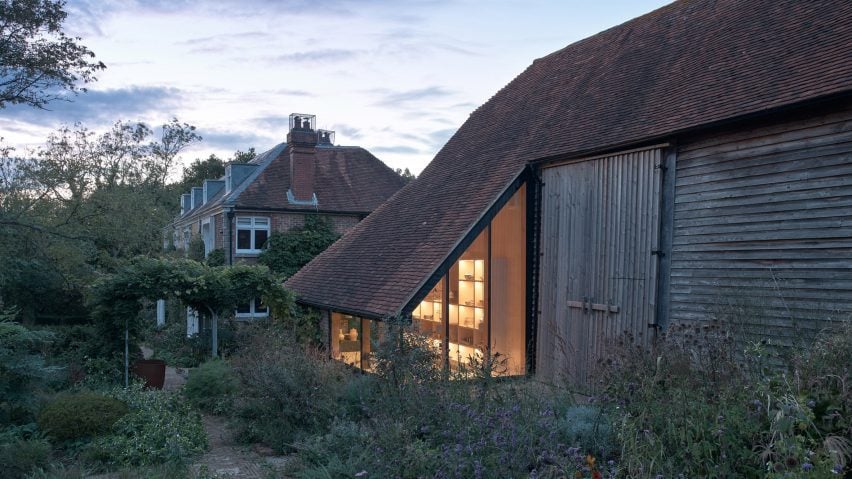
Ashton Porter Architects reworks 15th-century barn into tactile pottery studio
Plywood shelves lined with ceramics are slotted beneath the old oak trusses of Underwing Workshop, a pottery studio that British studio Ashton Porter Architects has created in an English barn.
Located in the village of Framfield, East Sussex, the studio occupies a dilapidated lean-to storage space attached to the Grade II-listed hay barn, which dates back to the 15th century.
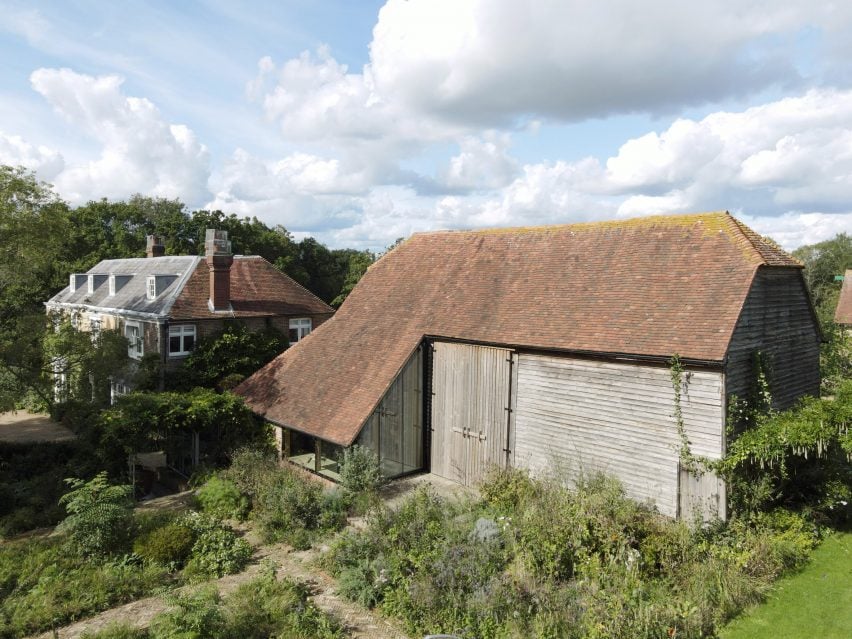
Ashton Porter Architects' main intervention was the removal of the structure's infill walls, added in the 19th century to convert it from an open animal shelter into an enclosed storage space.
The studio replaced these walls with large portions of glazing while levelling out its sunken floor, transforming the tile-roofed structure into the Underwing Workshop – a pottery studio with views out over the surrounding gardens.
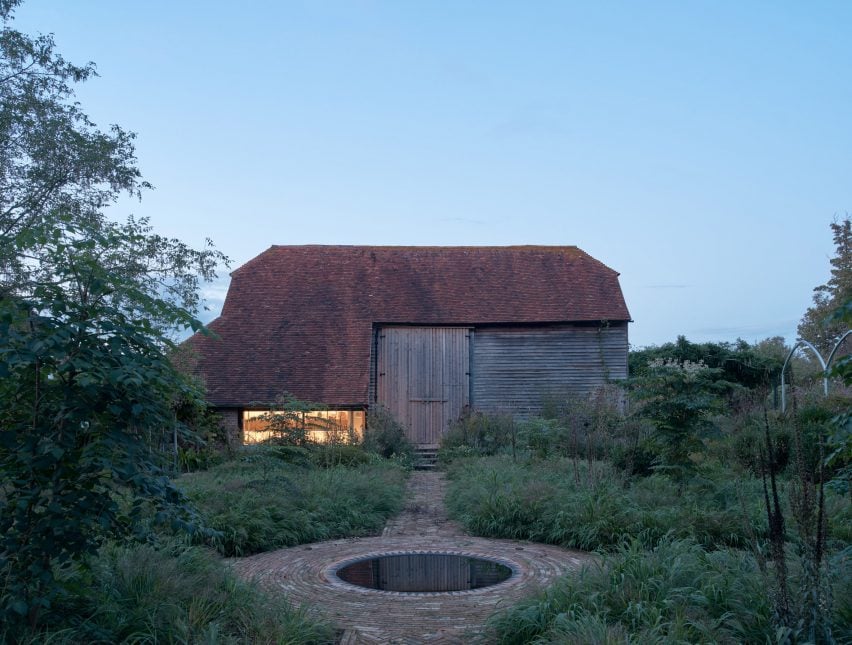
"The original 15th-century oak roof and wall structure of the existing hay barn were significantly dilapidated and there was a mixture of 19th-century and 20th-century infills," the studio told Dezeen.
"The most recent history as storage space meant that there was a lack of development and elements such as an unmade ground floor needed to be addressed."
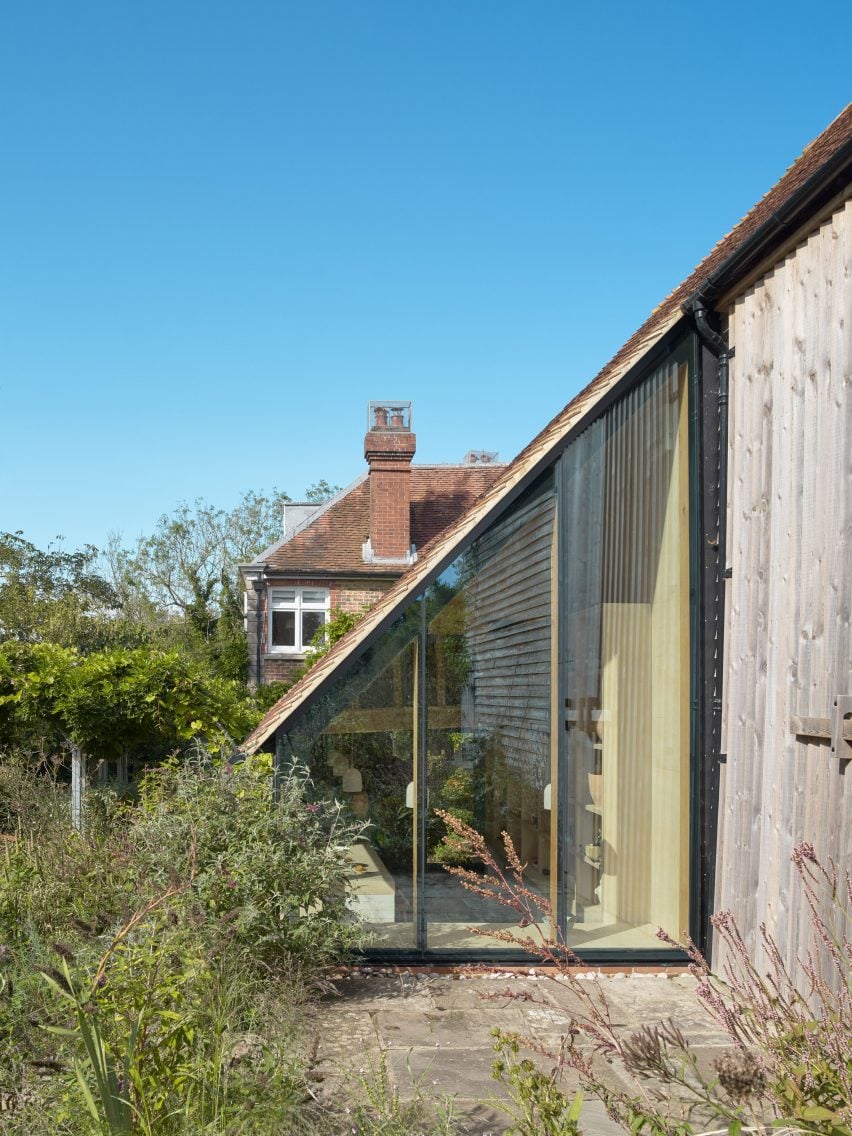
Ashton Porter Architects created Underwing Workshop as part of an overhaul of the wider farmstead, which began with an earlier extension and renovation to its main house.
According to the studio, the main challenge was determining how much of the old storage space's ageing structure needed to be retained due to heritage listing, and that this process required working with an expert in tree ring dating.
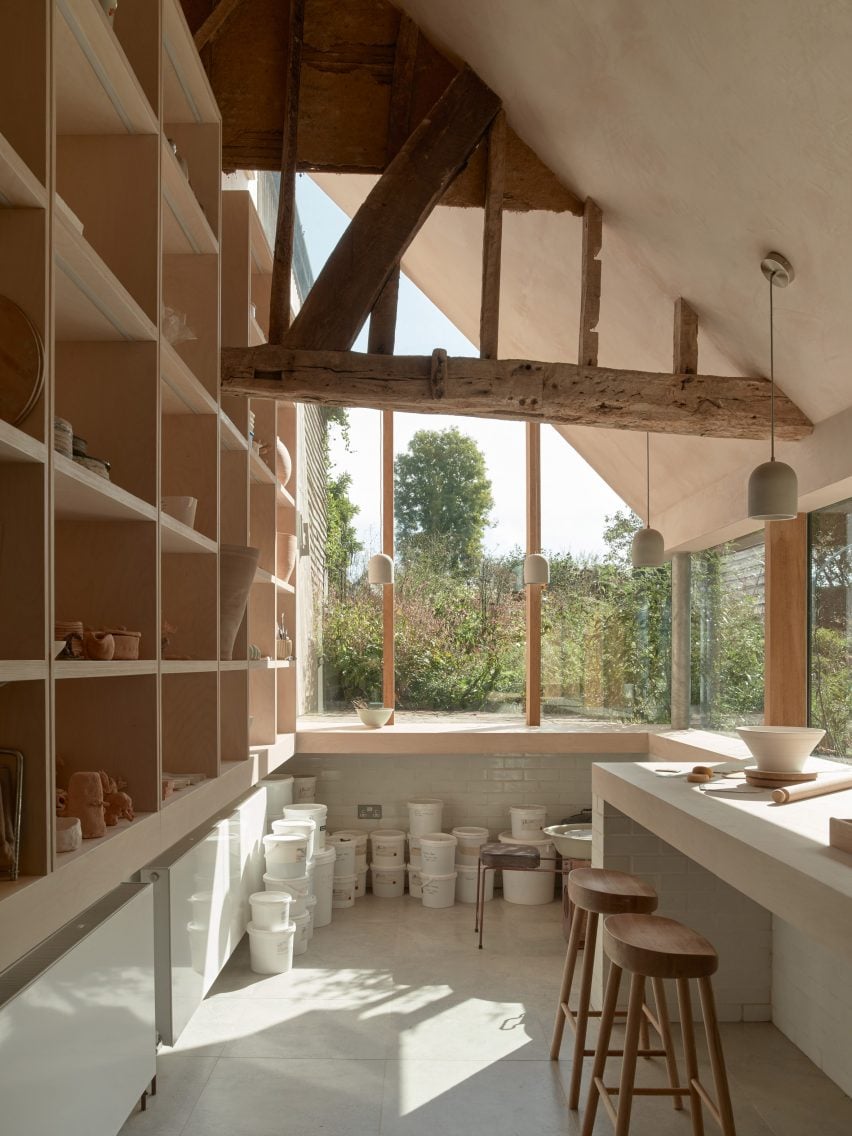
"To establish which parts were of historic relevance, either from the original barn or recycled from other local oak structures of a similar age and to determine which should be retained, an expert assessment of the dendrochronology was essential to assist with this work," the studio explained.
The retained oak beams now feature as a centrepiece within Underwing Workshop, adding texture to a palette of more sleek contemporary materials.
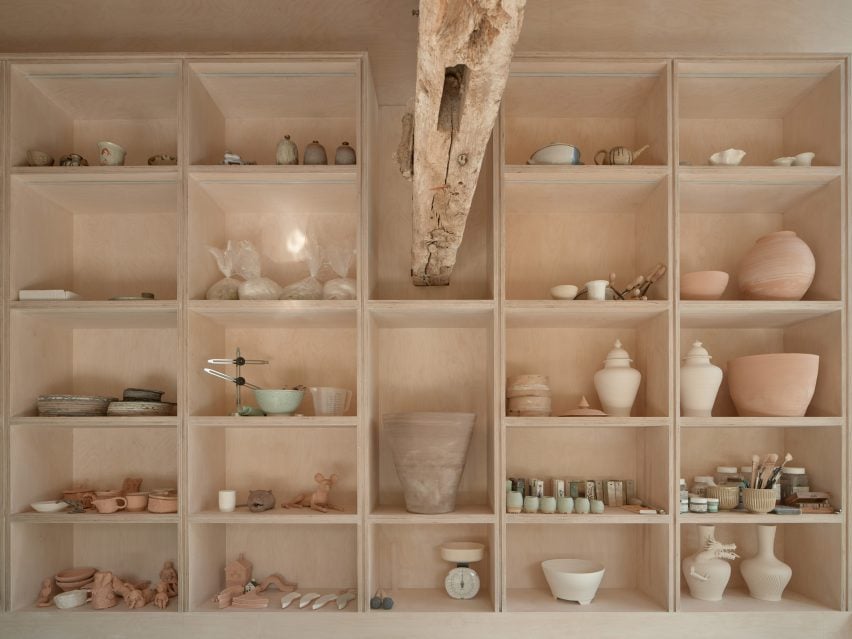
To remove the 19th-century infill walls and allow space for a glazed corner, the old structure has been reinforced by a "discreet cantilever" made of steel, hidden within the ceiling.
"This [steel] structure forms a supporting 'cradle' to the existing roof to allow both the removal of 19th-century infill walls with glass and to create a transparent corner to connect to the landscaped gardens in close proximity," explained the studio.
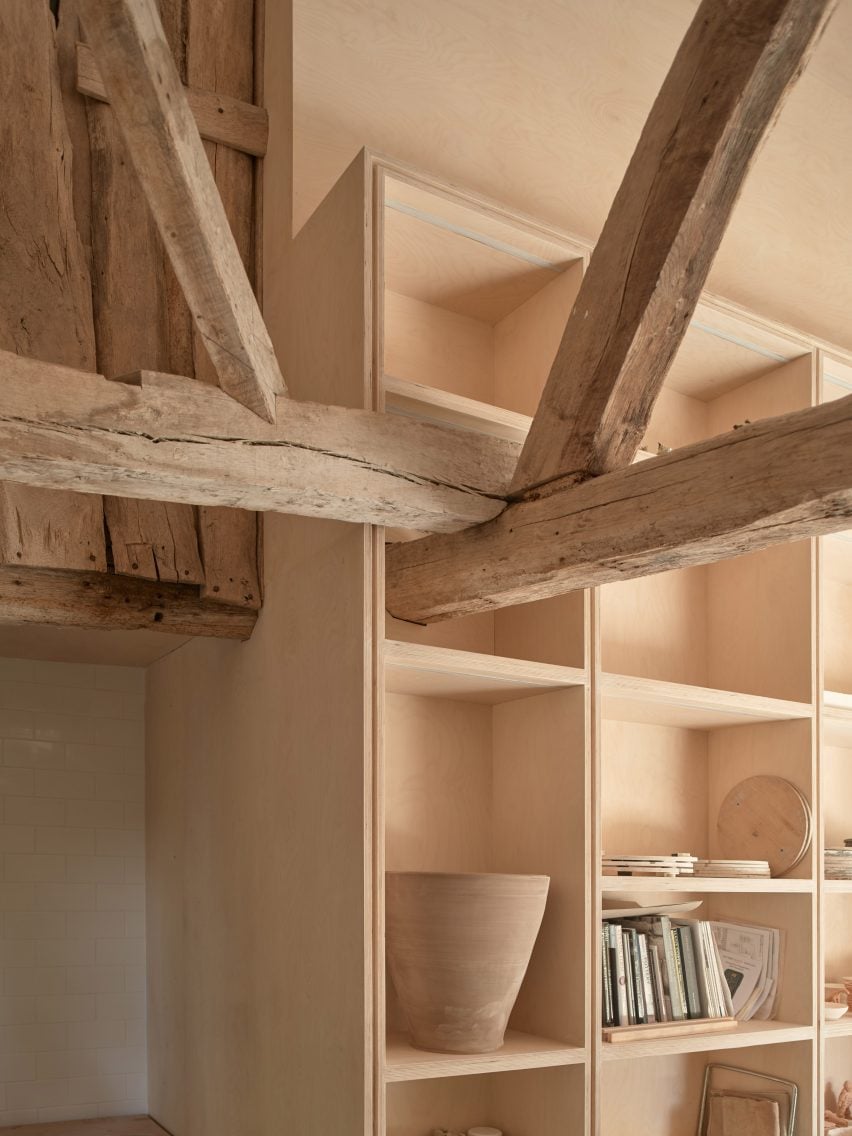
The combination of the concealed steel frame and silicone-framed glass creates the illusion that the old roof hovers over the pottery studio.
Inside, Underwing Workshop takes the form of an open pared-back room framed with shelving and work benches.
According to Ashton Porter Architects, the interior layout was determined to cater for "a strong connection to the garden and an eroded corner to allow this transparency".
Its floor is sunken below the outdoor ground level, aligning the workbenches with the planting outside and immersing the owners in greenery.
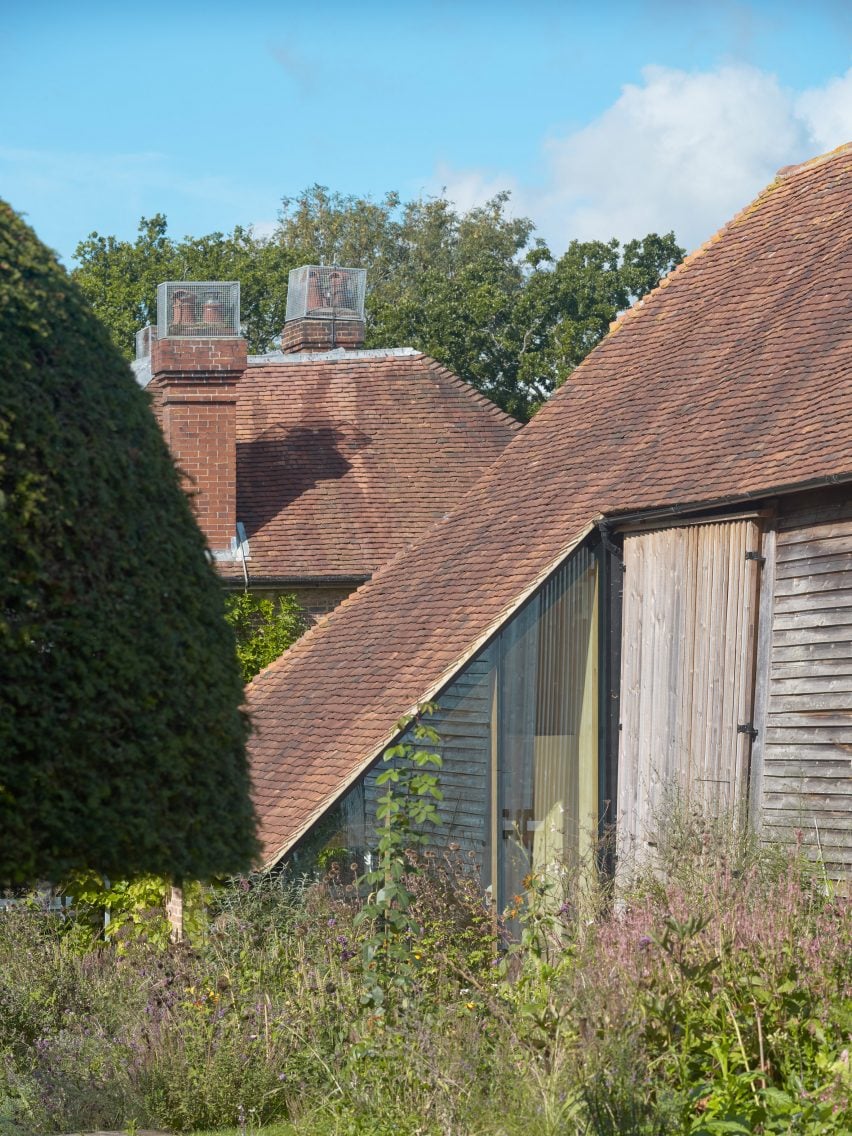
To complement and celebrate the existing structure, a minimalist palette of "unfinished and raw materials" was chosen for the interior fit-out, including plywood, unpainted plaster, raw concrete and glazed white bricks.
The centrepiece of Underwing Workshop is the birch plywood joinery, which has been used to craft the gridded shelving units that slot in around the original oak trusses.
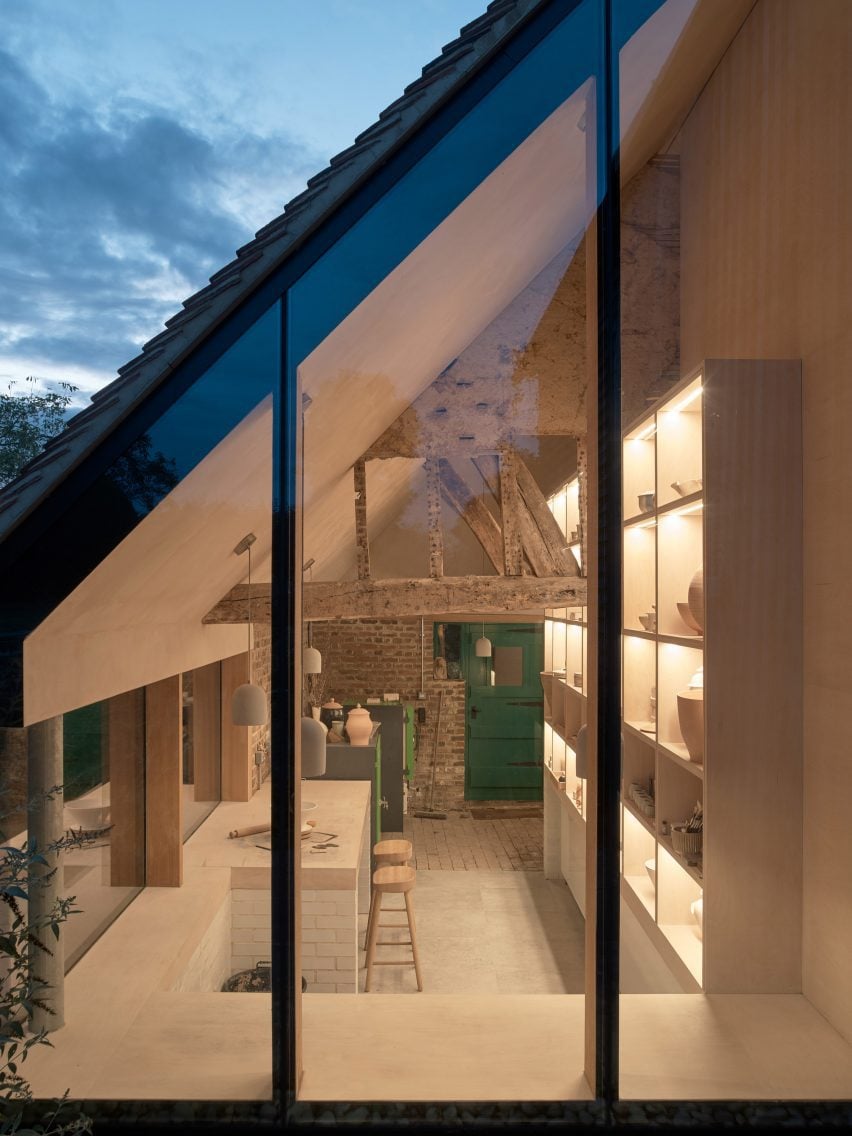
"The dilapidated structure is propped by a discreet cantilever steel frame and the existing oak roof structure is carefully preserved to juxtapose with the simple palette of contemporary materials," said Ashton Porter Architects.
"The existing oak roof structure is carefully preserved to juxtapose with the simple palette of contemporary materials."
Other pottery studios featured on Dezeen include a slate-clad structure that Bruno Stevens added to a house in Belgium and a stilted shed in the backyard of a Los Angeles home by Mark Watanabe and Raina Lee.
The photography is by Andy Stagg.